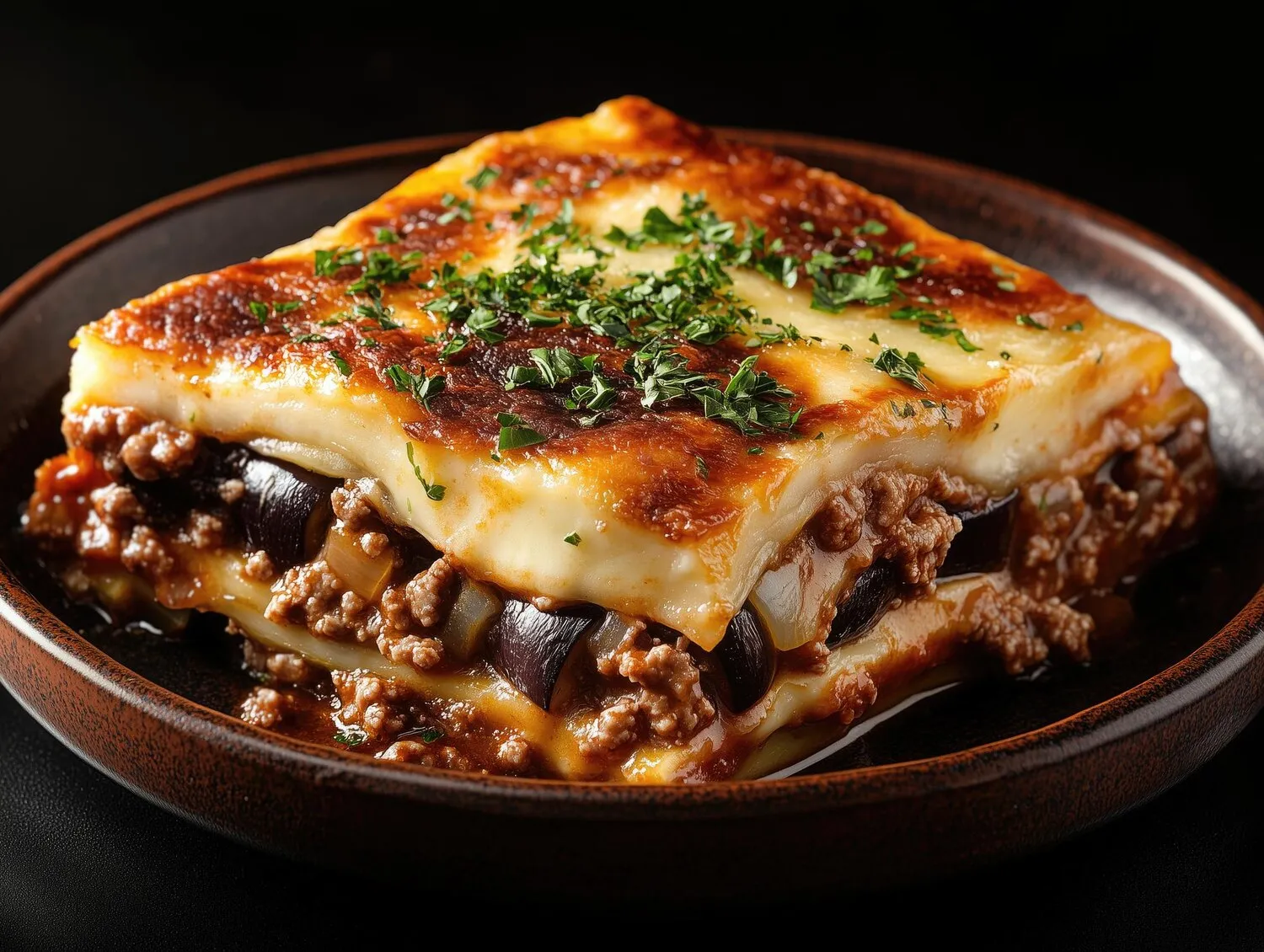
Moussaka
A baked dish consisting of layers of ground meat, eggplant, potatoes, and a creamy béchamel sauce.
Nutrition Facts
* The % Daily Value (DV) tells you how much a nutrient in a serving of food contributes to a daily diet. 2,000 calories a day is used for general nutrition advice.
Moussaka's history is debated, but it's generally believed to have evolved from Arab and Ottoman influences, particularly dishes containing eggplant. The modern version with béchamel sauce is attributed to Nikos Tselementes in the early 20th century, who sought to 'Europeanize' Greek cuisine.
Moussaka is a cornerstone of Greek cuisine, often enjoyed at family gatherings, celebrations, and in tavernas across the country. It represents Greek hospitality and the joy of sharing food.
Family Gatherings
Moussaka is frequently prepared for large family meals and special occasions, symbolizing togetherness and tradition.
Taverna Staple
You'll find moussaka on the menu of nearly every Greek taverna, often served as a hearty and satisfying main course.
Regional Variations
While the basic structure remains the same, regional variations exist in terms of the meat used (lamb, beef, or a mix), the spices added, and the inclusion of vegetables beyond eggplant and potatoes.
Moussaka offers a rich and savory flavor profile, combining the earthiness of eggplant and potatoes, the heartiness of ground meat, and the creamy richness of béchamel sauce.
The primary flavors are savory and comforting. Eggplant contributes a slightly bitter, smoky note, while potatoes add a starchy sweetness. The ground meat (usually lamb or beef) provides a meaty, umami depth. The béchamel sauce, flavored with nutmeg, adds a creamy and luxurious texture that balances the other elements. Spices like cinnamon, allspice, and oregano enhance the overall complexity.
Eggplant Preparation
To reduce bitterness, slice the eggplant, salt it generously, and let it sit for at least 30 minutes. This draws out excess moisture. Rinse and pat dry before cooking.
Béchamel Consistency
Ensure the béchamel sauce is smooth and creamy, without any lumps. Use a whisk and cook over medium-low heat, stirring constantly.
Layering Technique
Layer the ingredients evenly, starting with a layer of potatoes, followed by eggplant, then the meat sauce, and finally the béchamel. Repeat the layers as needed.
Meat Sauce Flavor
Don't be afraid to experiment with the spices in the meat sauce. Cinnamon, allspice, oregano, and bay leaves are common additions that enhance the flavor profile.
Explore additional Main Course dishes and restaurants
Explore Main CourseDiscover top dining spots and culinary experiences in Heerlen.
Explore HeerlenLearn more about the food culture, restaurant scene, and culinary heritage of Netherlands.
Explore Netherlands